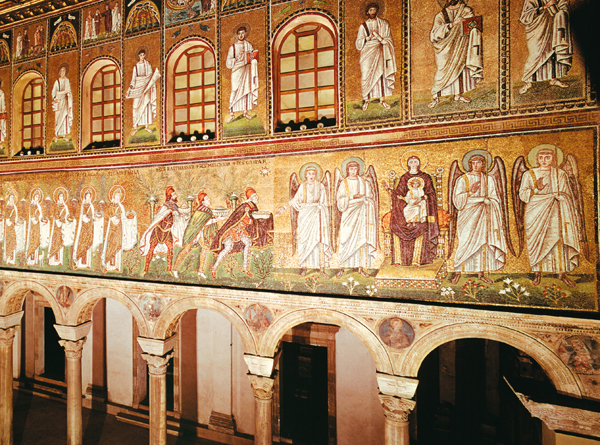Image Details

Scala/Art Resource, NY
A regal procession. Angels flank the enthroned Mary and Jesus in this sixth-century mosaic from Sant’Apollinare Nuovo in Ravenna, Italy. To the left, the magi, followed by a parade of wreath-carrying female martyrs, press toward them.
The names of the magi do not appear in the New Testament, nor does the number. The Gospel of Matthew, the only gospel to mention the magi, speaks simply of “magi from the East.” By the second century, they were identified as three; by the fifth, they were identified as kings and, in the West, given the names Balthassar, Melchior and Gaspar (often spelled Caspar), which appear above the magi (perhaps as a late addition) in this mosaic. Here, Balthassar is shown with a long brown beard; eventually he would be identified as an African or Moor. Melchior is a clean-shaven youth. Gaspar has long gray hair; over time, he would become the balding man who kneels before the babe in countless Renaissance images, including the painting at the beginning of this article and the cover of this issue.
